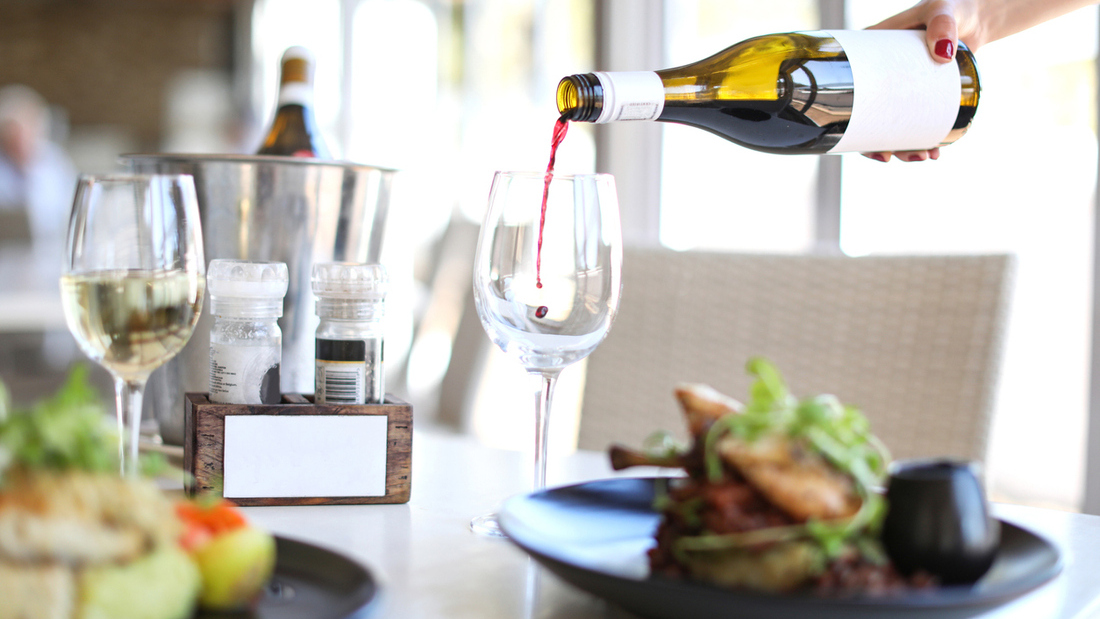
03 Nov Basic Wine Pairing Tips
Wine pairing is an art that can elevate your dining experience to new heights. Whether you’re a seasoned connoisseur or just beginning your wine journey, understanding the basic wine pairing rules is essential.
These guidelines can enhance the flavours of your meal and create a harmonious dining experience.
Tips For Wine Pairing
Here, we discuss eight fundamental rules for wine pairing, providing you with valuable insights into the world of gastronomy and oenology.
1. Match Intensity
When pairing wine with food, it’s crucial to consider the intensity of both the dish and the wine. The rule of thumb is to match bold flavours with bold wines and delicate dishes with lighter wines. For example:
- Heavy red wines like Cabernet Sauvignon or Malbec go well with rich, red meat dishes.
- Light white wines such as Sauvignon Blanc or Pinot Grigio complement lighter fare like seafood or salads.
2. Balance Sweetness
Balancing the sweetness of your wine with the sweetness of your dish is key. If the dish is sweeter than the wine, the wine may taste sour or bitter. Conversely, a sweet wine can overpower a mildly sweet dish. Keep these points in mind:
- Pair desserts with dessert wines like Port or Sauternes.
- Choose a dry wine for savoury dishes, especially if they have some sweetness.
3. Consider Acidity
A wine’s acidity can cut through rich or fatty foods, while cleansing the palate and uplifting the dining experience. Consider the following when pairing wine with acidic foods:
- High-acid wines like Sauvignon Blanc or Champagne are excellent choices for dishes with citrus-based sauces.
- Creamy and buttery dishes benefit from wines with good acidity, like Chardonnay.
4. Tannins And Protein
Tannins in red wines can interact with the proteins in meat, resulting in a more balanced and enjoyable pairing. When serving a protein-rich dish, keep these guidelines in mind:
- Cabernet Sauvignon, Merlot, and Malbec pair beautifully with steaks and other red meats due to their tannin content.
- Lighter red wines with fewer tannins, like Pinot Noir, work well with poultry and leaner meats.
5. Regional Pairings
Wines often reflect the characteristics of the regions where they are produced. Pairing wines with dishes from the same region can create a natural synergy. For instance:
- Pair Italian Chianti with pasta dishes like spaghetti Bolognese.
- Enjoy a French Bordeaux with classic French cuisine.
6. Don’t Overlook Texture
Considering the texture of your food is as important as its flavour. A wine’s body should complement the dish’s texture, creating a harmonious experience:
- Crisp and refreshing wines, like a dry Riesling, pair perfectly with foods that have a crunchy texture.
- Creamy dishes benefit from wines with a round and velvety mouthfeel, such as a well-aged Chardonnay.
7. Spices And Heat
When dealing with spicy or heavily seasoned dishes, be mindful of your wine choice. Spicy foods can amplify the perception of alcohol in wine, so opt for wines with lower alcohol content:
- A slightly sweet and low-alcohol Riesling can balance the heat of spicy dishes.
- Gewürztraminer complements the spices in Asian cuisine.
8. The Importance Of Aromas
The aromas of wine play a significant role in pairing. Consider the wine’s aroma and how it complements the dish. For example:
- Wines with fruity aromas, such as a New World Shiraz, can enhance the flavours of barbecue dishes.
- Floral and herbal aromas in wines like Sauvignon Blanc can elevate the experience of light, herb-infused dishes.
9. Consider The Age Of The Wine
The age of the wine can significantly affect the pairing. Young wines tend to be more vibrant and fruit-forward, while older wines develop complex flavors. Keep these points in mind:
- Young wines are fantastic with fresh and vibrant dishes.
- Older wines, especially reds, can harmonize with well-aged cheeses and rich, slow-cooked dishes.
10. Experiment And Personal Preference
Ultimately, the most crucial rule of wine pairing is to trust your palate and experiment. Everyone’s taste is unique, and what works for one person may not work for another. Experiment with different combinations and discover what you enjoy most.
Mastering the art of wine pairing doesn’t require a sommelier’s expertise. By following these eight basic rules, you can enhance your dining experiences, impress your guests, and discover the joy of matching wine with food. Remember that practice makes perfect, and as you explore different pairings, you’ll develop your sense of what works best for your palate. So, raise your glass and embark on a delightful journey through wine and gastronomy.
Please get in touch with us at Signature Cellars for more information about our wine cellar design and installation. We will provide you with custom plans and services.




No Comments